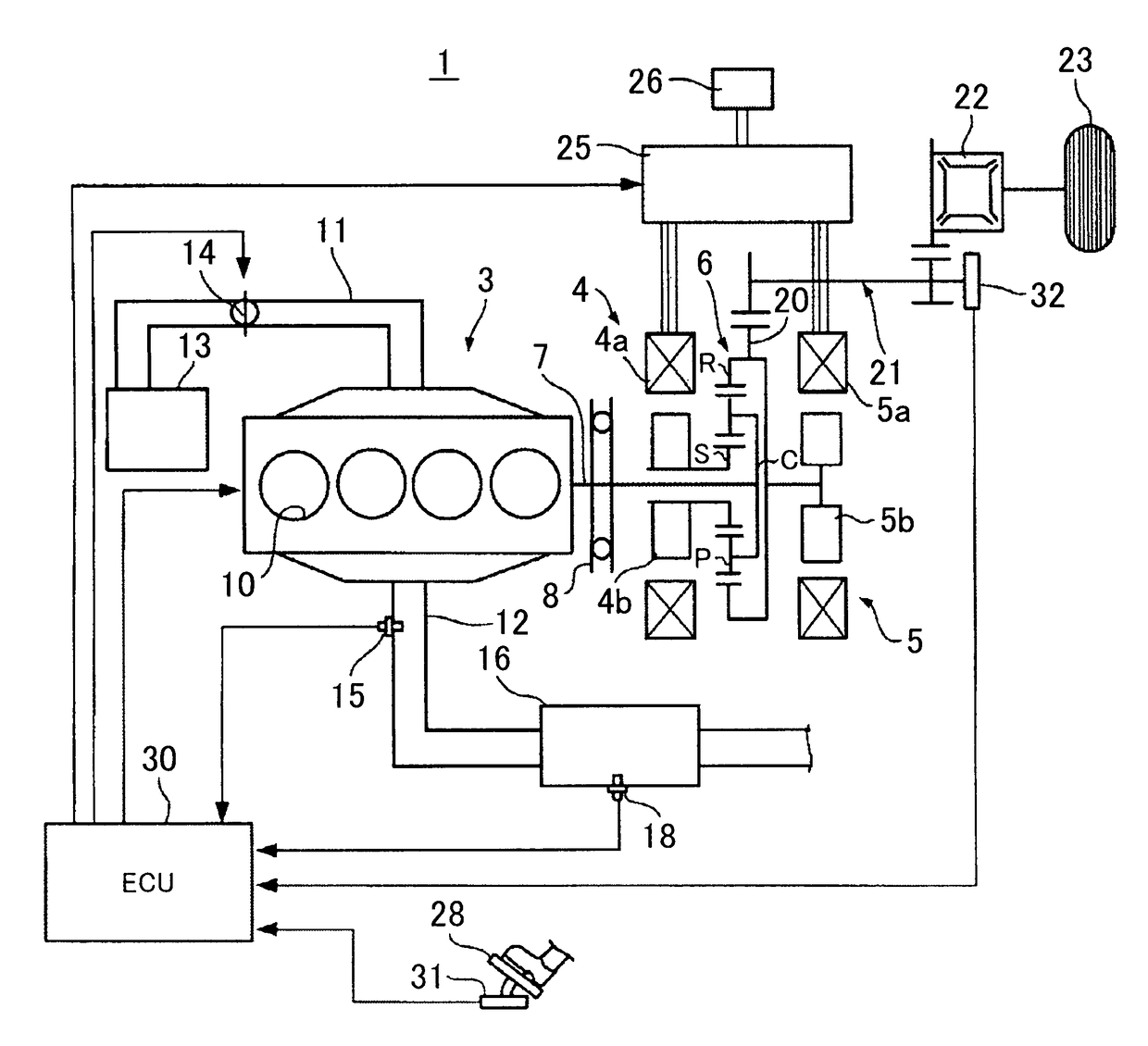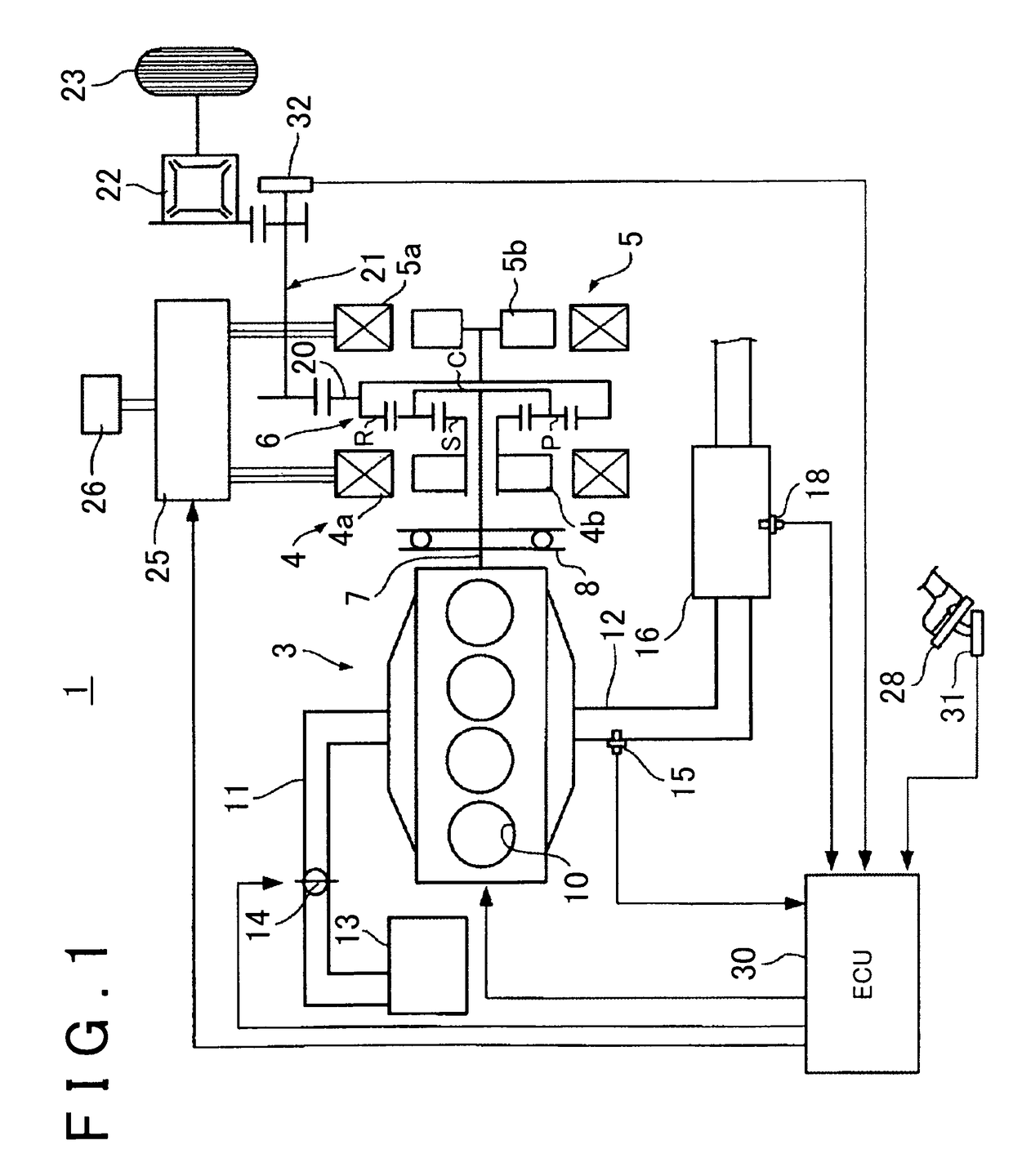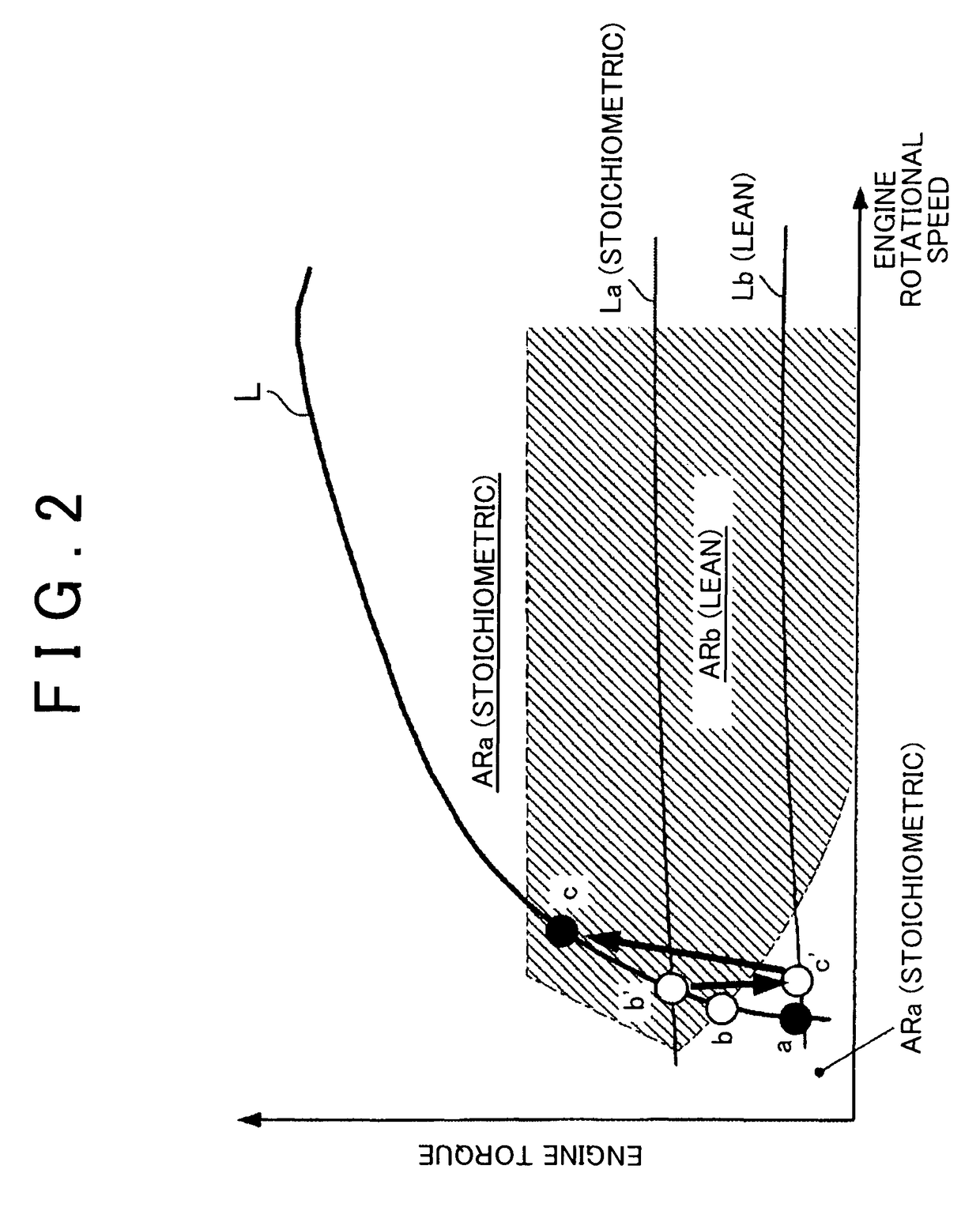Control apparatus for internal combustion engine
a control apparatus and internal combustion engine technology, applied in the direction of electrical control, ignition automatic control, hybrid vehicles, etc., can solve the problem of response delay in controlling the intake air amount, and achieve the effect of suppressing the response delay in changing over the combustion mode and restraining the thermal efficiency of the internal combustion engin
- Summary
- Abstract
- Description
- Claims
- Application Information
AI Technical Summary
Benefits of technology
Problems solved by technology
Method used
Image
Examples
Embodiment Construction
[0024]As shown in FIG. 1, a vehicle 1 is configured as a hybrid vehicle having a combination of a plurality of power sources. The vehicle 1 is equipped with an internal combustion engine 3 and two motor-generators 4 and 5 as power sources for running. The internal combustion engine 3 is an in-line four-cylinder spark ignition internal combustion engine that is equipped with four cylinders 10. The internal combustion engine 3 is configured as a so-called lean burn engine, and can change over the combustion mode between lean combustion and stoichiometric combustion. Lean combustion is a combustion mode in which an air-fuel ratio that is set on a leaner side than a theoretical air-fuel ratio is regarded as a target. Stoichiometric combustion is a combustion mode in which the theoretical air-fuel ratio, which is on a richer side than the air-fuel ratio of lean combustion, or an air-fuel ratio in the vicinity thereof is regarded as a target.
[0025]An intake passage 11 and an exhaust passa...
PUM
 Login to View More
Login to View More Abstract
Description
Claims
Application Information
 Login to View More
Login to View More - R&D
- Intellectual Property
- Life Sciences
- Materials
- Tech Scout
- Unparalleled Data Quality
- Higher Quality Content
- 60% Fewer Hallucinations
Browse by: Latest US Patents, China's latest patents, Technical Efficacy Thesaurus, Application Domain, Technology Topic, Popular Technical Reports.
© 2025 PatSnap. All rights reserved.Legal|Privacy policy|Modern Slavery Act Transparency Statement|Sitemap|About US| Contact US: help@patsnap.com



